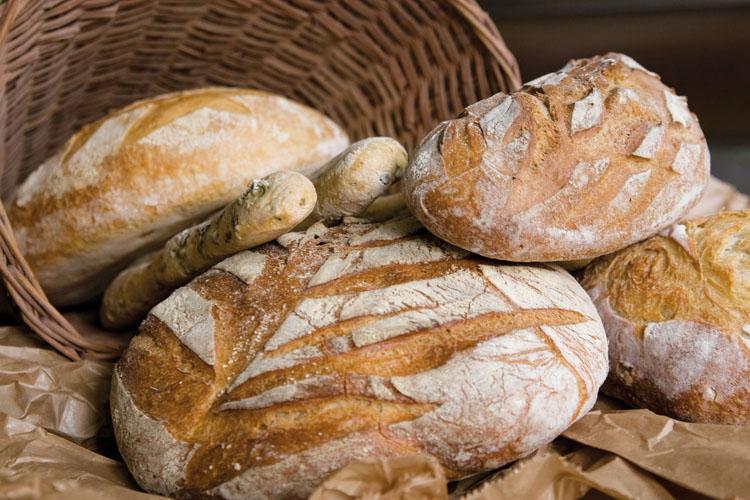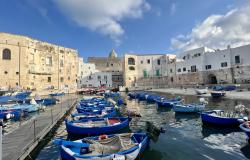A staple of the Italian diet, bread is something you can be sure to find during every Italian meal. Below is part 1 of a two-part series dedicated to "il pane".
It was the Greeks who introduced the Romans to the art of baking leavened bread around 170 BC and, by 147 BC, it was considered important within Roman society to own your Greek slave-baker - in fact, it became de-rigueur: necessary according to etiquette.
There was very little wheat grown during Roman times due to the expansion of the cities and the farming of cattle, therefore wheat was imported and, with it, came recipes from abroad that became adapted into regional breads, many of which still exist in some form or other. For example the Arabic flatbreads may have evolved into Italy’s piadina.
Rome’s emperors were under no illusion of how important bread had become and would often remark that the best way to keep the people happy was with panem et circenses (bread and circuses). While the popularity of circuses has waned, the same cannot be said for the simple loaf of bread.
Bread is integral to the Italian diet, in fact it has become an essential part of Italian life and is eaten with almost every meal, whether it’s a chunk of casareccio to mop up pasta sauce or grissini with an aperitivo, pre-dinner.

Although every dining table in Italy features bread of some description, don’t be fooled into thinking that Italians have a higher consumption, in fact they eat a similar amount to their European neighbours, with Germany consuming a higher amount per year.
The bread eaten in Italy is predominantly white; this harks back again to Roman times when the white flour was reserved for the wealthier citizens and the darker grain was sold onto the poor along with rye and chestnut flour which made pane nero, darker coloured bread.
Following the fall of the Roman Empire, artisan bread-makers began to experiment with local ingredients and the resulting breads took on regional changes; by the time of the Renaissance, many of today’s regional breads had become well established and, at the Medici family's feasts, some courses required some of these specialty breads as accompaniment.
One of the oldest known bread that is still baked today is pane di padula which is produced in the province of Salerno, Campania: it’s made from a mixture of wheat flour and semolina, and, before baking, the top of the loaf is engraved with squares, which are said to resemble the Pompeii mosaics.
The marking of bread goes back to a time when everyone from the village would bring their loaves to be baked in a communal oven: each family would have their own marchio to distinguish their baked loaves from their neighbours when they returned to collect them.

The most common mark on a loaf is the cross; some historians say this was a symbol of faith, a sign that the bread had been blessed; others retain that it is simply to allow the cooking dough to expand.
But, there’s no escaping the fact that bread features highly in Italian faith. Since ancient times, bread has been seen as the symbol of life; the grain became a mark of fertility and the loaves it produced were therefore seen as sacred.
During the first centuries of Christianity, loaves were shaped into a ring symbolising a circle of faith never ceasing and then, by the 13th century, this thought that bread was sacred led to the conception of the Holy Host, which was initially baked by priests with only the finest quality wheat.
Today special breads are still baked in celebration of faith. In Basilicata, to commemorate the Feast of the Immaculate Conception (8th December), a ring-shaped loaf is baked with fennel seeds and lard. A similar ring loaf is made from wholemeal flour in Calabria to celebrate Corpus Christi and, during street processions, the loaves are hung over people’s arms.
Celebratory bread differs from region to region depending upon what ingredients are available. In southern Abruzzo to celebrate Easter, a loaf is baked that has small pieces of meat, such as ham and pancetta (bacon) nestled within the bread’s crumb. Some of the other religious festivals that have special breads attributed to them are the Feast of St. Joseph (19th of March), the Feast of St. Nicholas (6th December) and the Feast of St. Lucia (13 December).

Maybe it’s this devotion that is the reason that even today Italians loathe to throw away bread. Some people still consider it bad luck to dispose of pane raffermo, old bread that has become hard, therefore old crusts are turned into breadcrumbs to thicken soups and stews; hunks of stale bread are either moistened and added to salads or coated with oil and turned into croutons. But whatever loaf is served or turned into, it is evident that Italians love their daily bread.
In part two of this look at Italian bread, we shall examine the types of regional bread available and the flours and baking processes used in Italian kitchens and bakeries.









